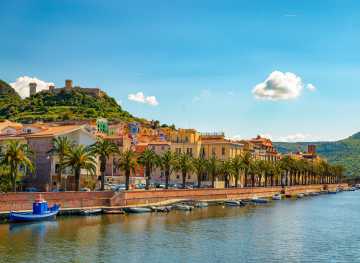Holidays in Sardinia - Nuoro
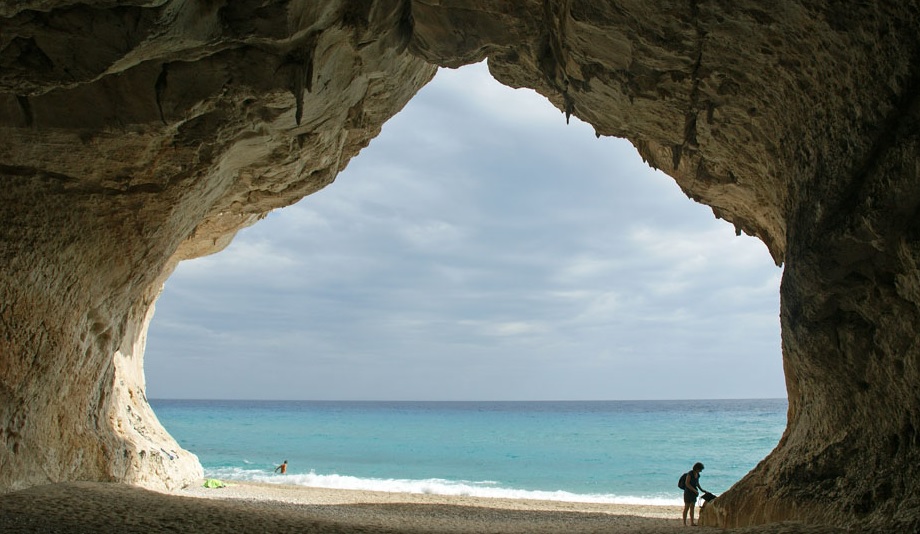
The province of Nuoro
The province of Nuoro has a total of 210.972 inhabitants and an area of 5.638 square kilometres. This means that the density of population is 37 inhabitant per square kilometre, making Nuoro the province in Italy with the lowest density of population, and that’s why only the 1% of the territory of this province consists of urban areas!
Nuoro: a bit of history...
Nuoro’s origins date back in prehistoric times. In the 1500s BC to 250 BC Nuoro grew into the centre of the Nuragic civilization. The importance of this region for the Nuragic civilization is documented by the presence of Nuragic sites: this area counts 30 Nuragic villages.
In the year 1147, a small village by the name of Nugor appeared on a medieval map. In the 12th and 13th centuries this village grew to more than 1000 inhabitants. This village was later called Nuoro and was of medium importance under the Aragonese and Spanish rule of Sardinia.
During the 17th century the city faced famine and plague struck and the city fell into disrepair. When the entire island belonged to Italy in 1814, Nuoro became the administrative centre of the province and in 1836 it even received the city title.
Art and culture in Nuoro
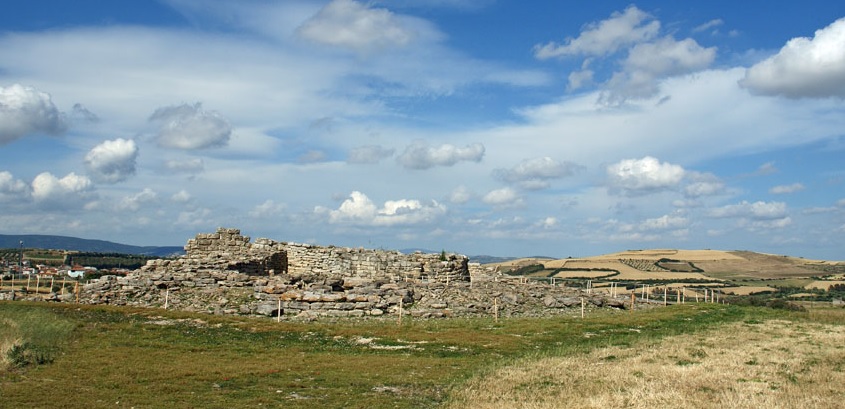
The main archaeological heritage of the island consists of the nuraghe towers. These are towers that were built in the Bronze Age in Sardinia, and the history of the civilization that built them is still a mistery. The towers could reach heights of up to 19 meters, and it is still unknown for which purpose they were built, some scholars argue that they were defensive towers, other say temples. Sometimes there was a nuraghe established around a village or complex structures of several nuraghes existed. Various Nuragic villages can be found, especially in the vicinity of Nuoro.
Besides the nuraghes, Nuoro has a lot more to offer in the field of art and culture: from the museums dedicated to famous Nuorese writers and artists, to the beautiful churces and monuments Nuoro and its province can be considered the cultural hearth of Sardinia.
Places to visit in the city of Nuoro
Museum of Art Nuoro (MAN): The museum is located in the old town, in a historic building from the 19th century . The well-curated expositions feature contemporary art by various Sardinian, but also international artists.
Francesco Ciusa Museum: This museum is dedicated to the famous Sardinian sculptor Francesco Ciusa. The works exposed in this museum all come from the most prolific moments of Ciusa’s research, from the 20s’ to the 40s’.
Museum Deleddiano: former home of the Sardinian writer Grazia Deledda, the first Italian woman to win the Nobel prize. It contains her work and her passion for her hometown and country.
Santa Maria della Neve cathedral: The cathedral is dedicated to Nuoro's patron saint, the Madonna della Neve. In the cathedral you can admire works by Alessandro Tiarini and works of Sardinian art school from the 19 e and 20 e century.
What to see in the province of Nuoro
La Stazione dell’Arte (Maria Lai’s museum): This museum, located between the mountains in Maria Lai’s hometown, the picturesque Ulassai. Maria Lai is one of the most important Sardinian artists, known all over the world for her sewn canvas, but also for her continuous research for different forms of art.
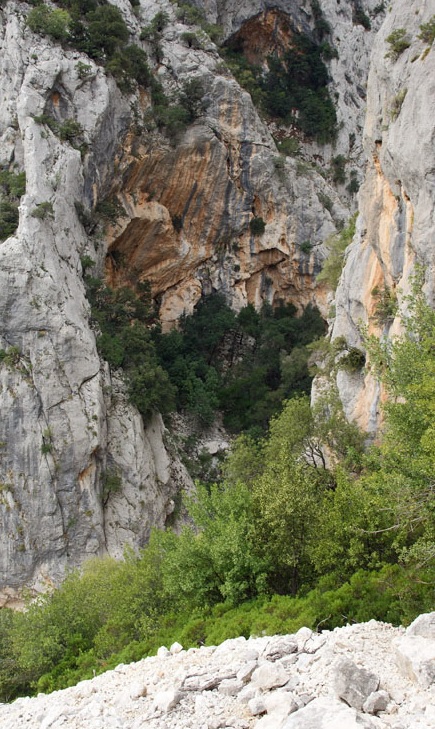
Gennargentu massif: this massif has the highest peak of Sardinia, Punta La Marmora (1834 meters)
Cave of Bue Marino: this cave owes is name to the “Sea Ox”: that’s how the local fishermen call the rare monk seals that used to frequent this cave. The cave also features Neolithic petroglyphs, and it can be visited by joining a guided tour from Cala Gonone.
Su Gorroppu Canyon: deepest canyon in Europe, perfect for outdoor activities as canyoning, climbing and hiking.
Tiscali: this Nuragic village was built in a cave which was frequented even in the pre-Nuragic age of Sardinia.
Sa Oche e Su Bentu: the name of these two long cave systems is Sardinian for "the voice" & "the wind". They owe their names to the sound that the strong air currents produce in the caves.
Oliena: a pictoresque village with characteristic, white-walled houses and the ruins of a castle.
Orosei: a town with several attractions such as the Giovanni Guiso museum and the parish church of San Giacomo Maggiore in Moorish architecture.
Orgosolo: The small town of Orgosolo is located approximately 20 km from the old town of Nuoro. This town is known for its murals painted on more than a hundred walls in the city in the 1970s. The murals are also called murales and carry a socio-political message related to the region’s violent past.
Sail through the turquoise waters of the gulf of Orosei
The Ogliastra region in the province of Nuoro
The former province of Ogliastra, located on the east coast of the island, stretching from the peaks of the Gennargentu mountain range to the Tyrrhenian Sea, in now part of the province of Nuoro. The main cities in Ogliastra are Tortolì and Lanusei are definitely worth a visit. The landscape is spectacular: beautiful mountains that descend to the coast, white sandy beaches and rocky bays provide a beautiful environment. There are numerous hiking or cycling routes, perfect for exploring the area!
Check the spectacular landscape!
A bit of history....
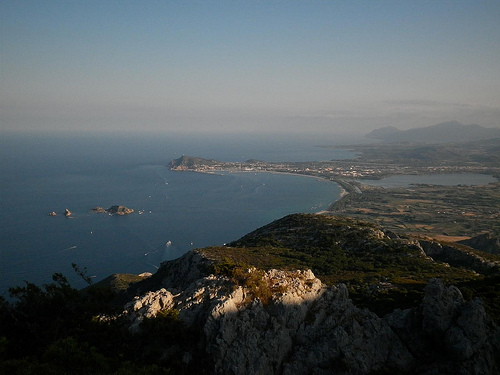 Around 1800 B.C. , a new group of residents arrived in Sardinia. These new inhabitants came from the Iberian peninsula planted grain fields and built stone villages, the nuragic villages, in the Ogliastra region and other parts of the island. At least 6,500 remains of nuragic villages can be found on the island to this day. Traditionally, the region was known for the wool trade and the production of colorful carpets.
Around 1800 B.C. , a new group of residents arrived in Sardinia. These new inhabitants came from the Iberian peninsula planted grain fields and built stone villages, the nuragic villages, in the Ogliastra region and other parts of the island. At least 6,500 remains of nuragic villages can be found on the island to this day. Traditionally, the region was known for the wool trade and the production of colorful carpets.
What you shouldn't miss in Ogliastra
Church St. Andreas, Tortolì: One of the most important and beautiful churces in Ogliastra.
Torre di Arbatax, Tortolì: This massive tower dominates on the edge of the municipality where one of the island's main harbors is located. The tower is located at the port from which, among other things, ferry services depart to mainland Italy.
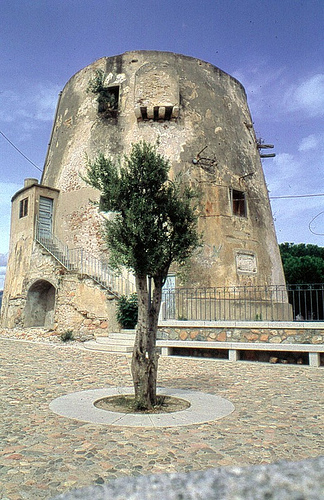 Museo su Logu de S’Iscultura, Tortoli: This new open-air museum has exhibitions of contemporary artists. In addition, there are also temporary exhibitions to visit in this open-air museum.
Museo su Logu de S’Iscultura, Tortoli: This new open-air museum has exhibitions of contemporary artists. In addition, there are also temporary exhibitions to visit in this open-air museum.
The open air museum of art in Tortolì
Lago Alto del Flumendosa, Lanusei: This reservoir is located on the north east from the town of Lanusei. With a length of 122 km, the Flumendosa river is the second longest river in Sardinia. The area surrounding the reservoir is covered with chestnut trees and the famous cork oak that grows in Sardinia. The nearby village of Villanova Strisaili (3900 inhabitants) is also worth a visit.
Nuraghe Sceri, Lanusei: This area contains many remains from the Neolithic era including nuragic towers and other remains excavated between the years 1994 and 2003.
What to see in the Ogliastra region
Monte Limbara: Imponent mountain range in the north of Ogliastra, the peak of Punta Sa Berritta (1362m) the highest point in this part of the province.
Scala di San Giorgio: spectacular natural monument that offers a beautiful view of the area and excellent hiking and climbing opportunities.
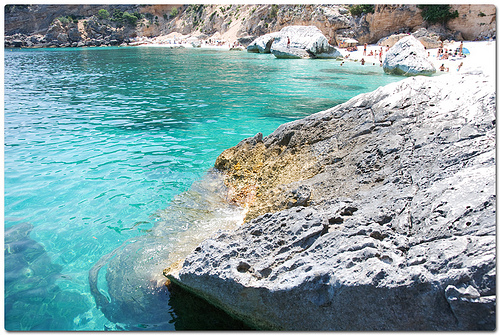
Baunei: this mountain village that was just nominated “2nd most beautiful village in Italy”, is built in terraces on the side of the mountain at an altitude of 1000m. In the immediate vicinity of this village, you can go hiking, rock climbing or mountain biking, or just relax in one of the secluded bays with beautiful rocks that flow into the sea








